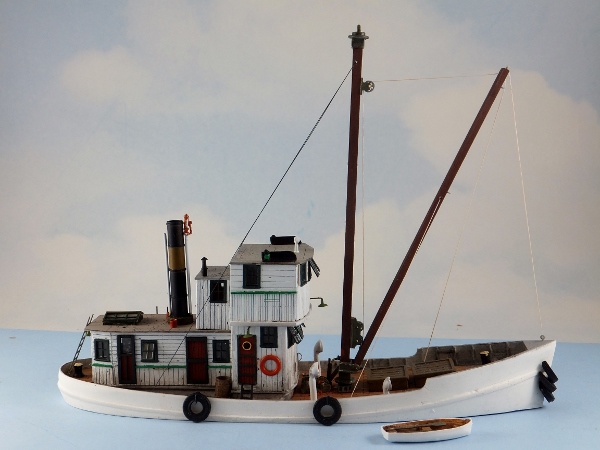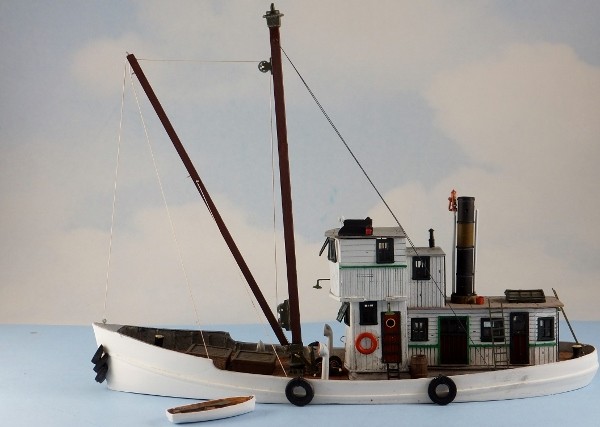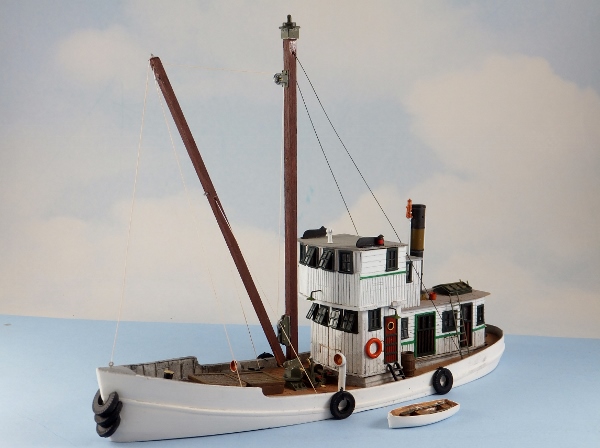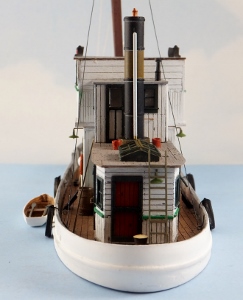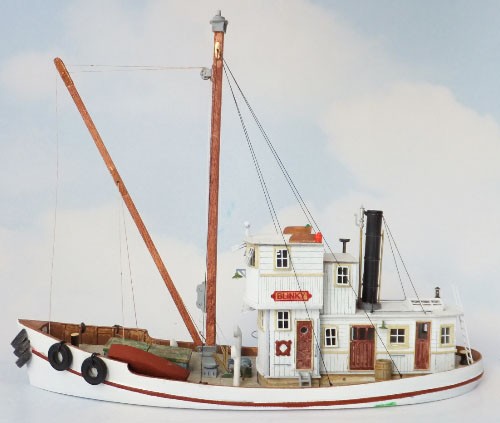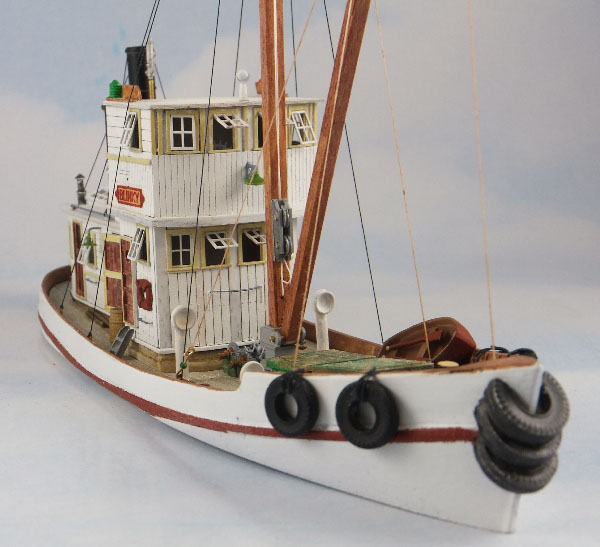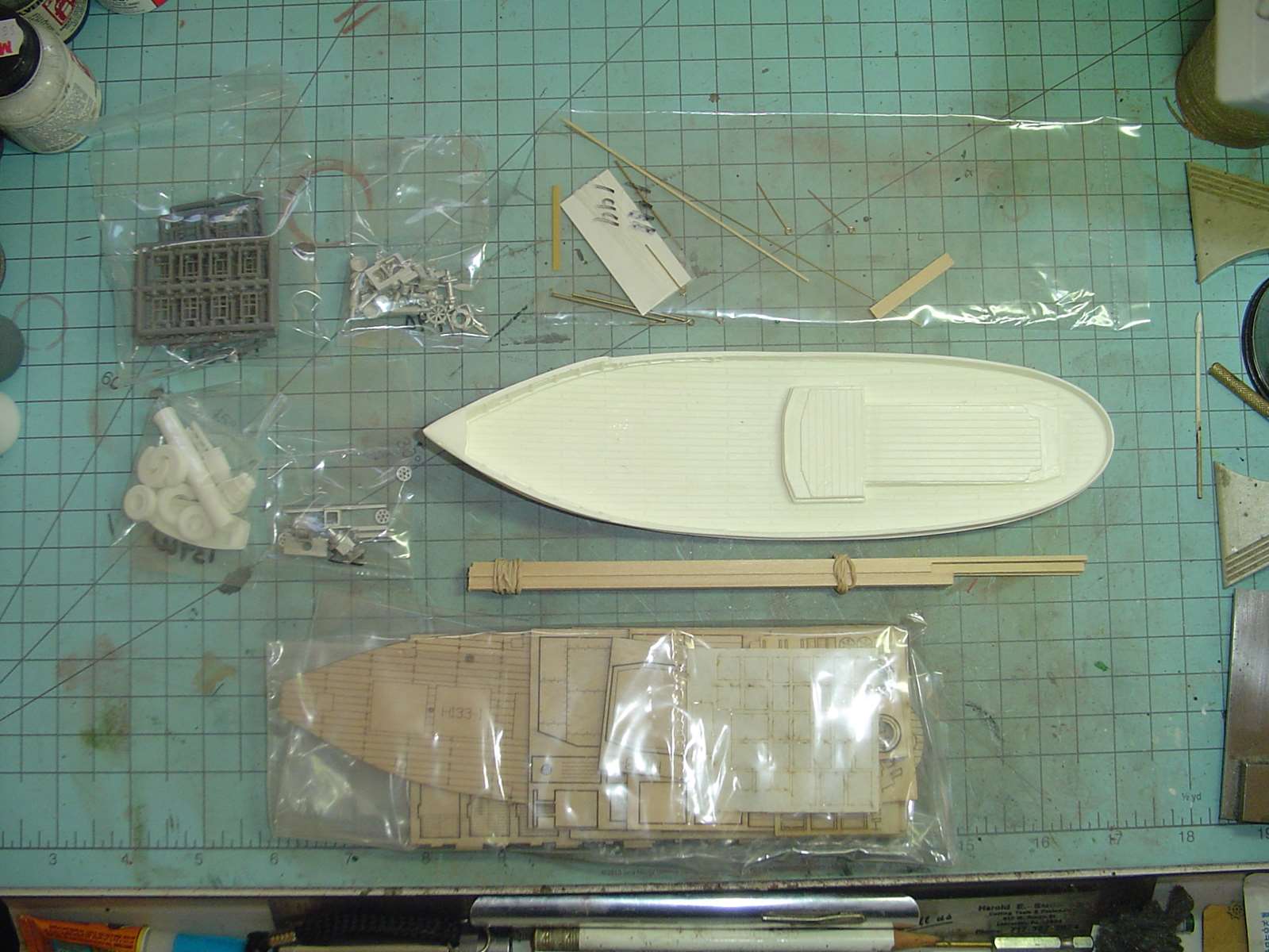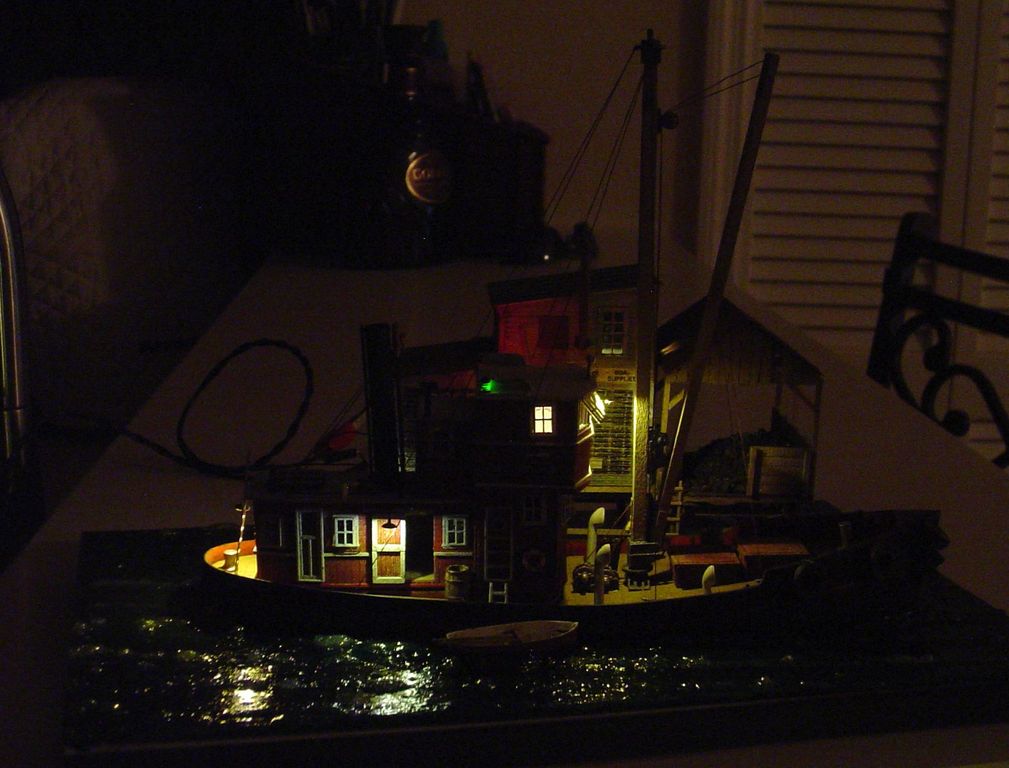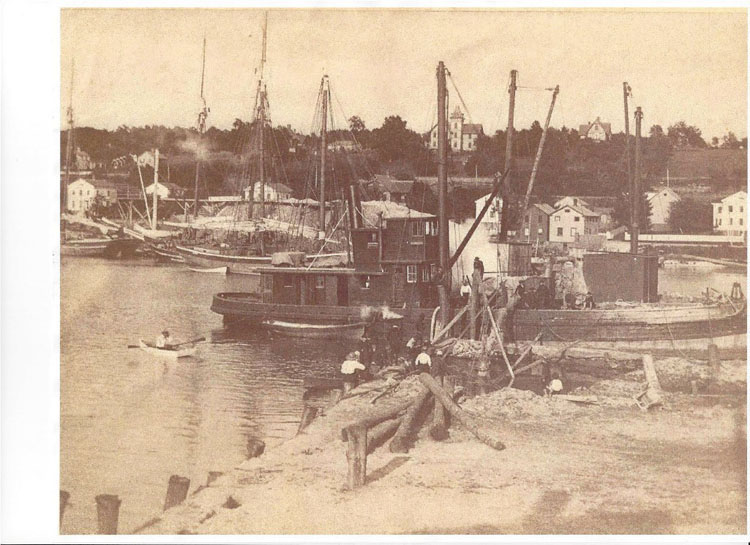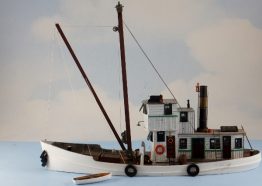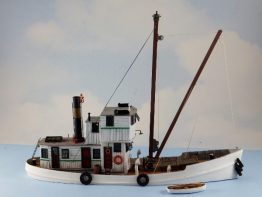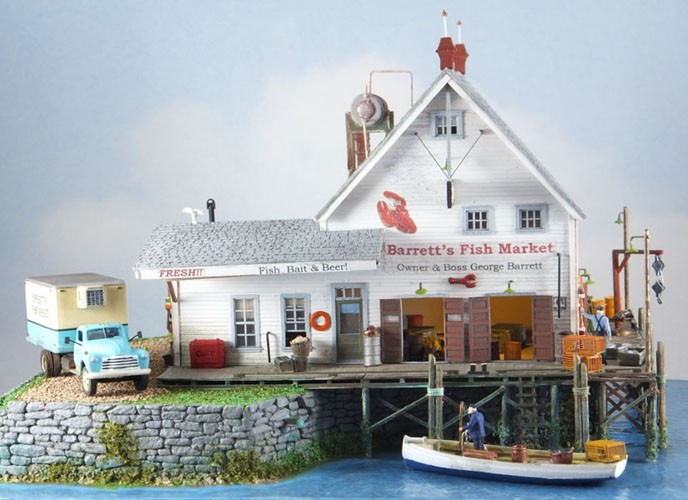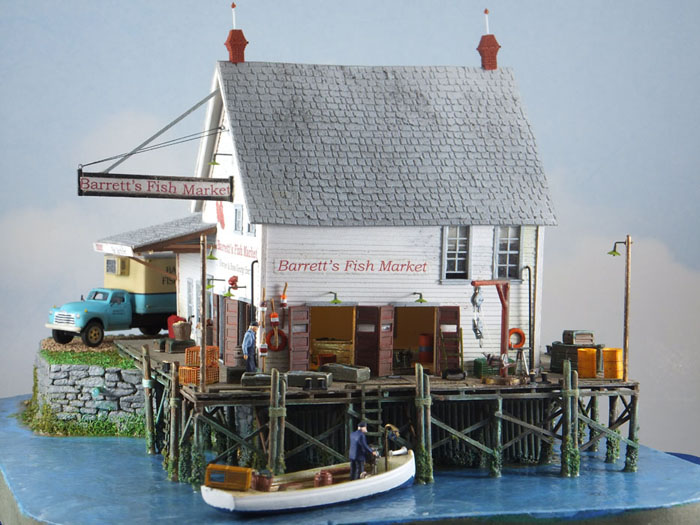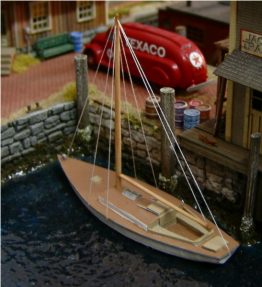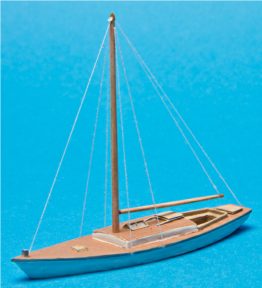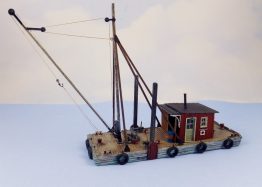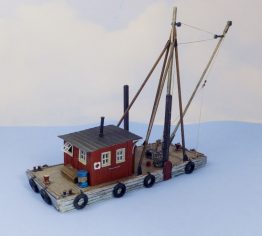Description
Laser cut wood craftsman kit
Laser cut wood superstructure – resin hull – metal fittings
Actual size of craft: Length 8-1/2” Width 2-3/8”
Note: last photo listed is old photo supplied by one of our customers that was used for prototype.
Our 65’ Workboat/Lighter Craftsman kit with laser cut wood superstructure is a charming, steam powered vessel designed to give the modeler the best advantages in building and finishing a terrific model. All of the original patterns were made with reference to the details of several prototypes and much research in books, museums and conversations with master modelers. We made an effort to produce wood walls that exhibit poor carpentry as would be found in many such vessels.
Our Craftsman kits are freelance designs that incorporate features from some prototype vessels No model shipbuilding skills are required for our kits. Kits include all parts necessary for assembly, as shown in the photos unless noted as well as detailed drawings, instruction sheets and finishing instructions.
Regarding the prototype, our “HO” lighter/workboat was once a common sight along fresh & salt water waterfronts. They were mainly fueled by coal or wood fires to create steam, thereby called steamboats. These vessels were used for freight transfer and marine construction work such as dock building, vessel loading & unloading, salvage, moving large rock for break walls and riprap etc. They would have carried a lot of heavy cargo, operated a clam shell bucket as in dredging a canal, push or pull other vessels that had a need, or just about any other maritime project you can think of. The hulls and boilers would be rugged and powerful. Little effort was made to construct beautiful vessels but strength and power were important. The beauty and charm of these vessels came from pure simple rugged design. The deck house and lower pilot house were probably built from scrap lumber by builders with more seamanship skills than carpentry skills. They were probably not extremely familiar with a level. The boiler was perhaps removed from some derelict wooden hull having seen better days. The hull may have come from a retired tug or fishing vessel but showed good construction and very little rot. The upper pilot house was possibly removed from a beautiful retired passenger ferry and placed on this hull. This vessel was built for one reason only, to make a profit with very little investment made. These vessels would have been designed, built, owned, and operated by local families, captains, railroads, or investors.
Steam, as an agent of power, can be traced back approximately 2000 years to the Egyptian civilization. We tend to think of steam powered ships as those that plowed through rivers, lakes and large bodies of water carrying both freight and passengers to exciting destination. This kit represents a small steam powered vessel working on the east or west coast, lakes, rivers, or oceans carrying on commerce that was vital to the growth of our nation, from the mid 1800’s to mid 1900’s. There is so much to say about these steam powered vessels that have a distinct parallel with our nation’s history. I will not attempt to be historian and focus on building this kit. However, I strongly recommend that you read up on the subject. Here are a few great books that you might have a hard time putting down.
STEAMBOAT DAYS by Fred Irving Dayton
STEAMBOATS YESTERDAYS (ON CASCO BAY) by Capt. William J Frappier
STEAMBOATS of GLOUCESTER and the NORTH SHORE by John Lester Sutherland
STEAMBOATS COME TRUE by James Thomas Flexner
